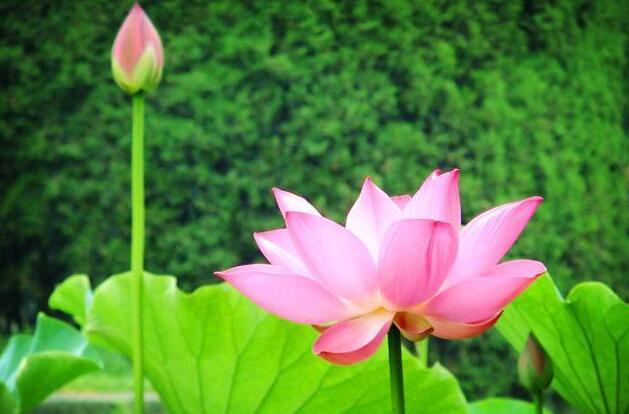Humans need to sleep every day, and animals also have their own sleep cycles. What about plants? In fact, careful people can find that flowers are also sleeping. But why do flowers also need sleep? Does Hua’er also have sensory organs and need to rest?
When it comes to flowers that need sleep, the first thing that comes to mind is the water lily, a veritable sleeping flower that slowly opens its petals every day when the sun rises, and when the sun rises, the lotus blooms brilliantly. As the sun sets, the water lily slowly closes and enters a state of rest. This time, the water lily slept so sweetly, and I only got up when the sun rose the next day.
Does Lotus really need to rest? Does the water lily also have its own clock mechanism that can wake up at sunrise and close at sunset? After research, it was found that the water lily is not really sleeping, but because the sunlight makes the water lily open and close regularly.
When the sun rises, because lotus petals are particularly sensitive to temperature, warm sunlight shining on the outside of the petals will slow down the growth of the outside of the petals. In contrast, the inner layer of the petals grows faster at this time, and as the temperature rises, the entire flower can be seen spreading out. When the sun shines at noon, the water lily flower will stretch out into a large disc shape.
In the afternoon, the direction of the light changes. At this time, the inner temperature of the lotus petals is high and the outer temperature is low, so the inner layer grows slowly and the outer layer stretches. The whole flower appears to be closed. It seemed as if the water lily was asleep. The advantage of this is to prevent damage to the stamens caused by low temperature at night.
The most common dandelion on the roadside opens its petals every morning. The golden petals are like small chrysanthemums, and the bright colors can be seen even from a long distance. This kind of flower blooms during the day and closes at night. It blooms during the day to attract surrounding flying insects to spread pollen for itself; at night, the temperature drops, and the flower is closed to protect the flower from low temperature. In addition, there is dew at night, and pollen is easily lost if it blooms. Although plants cannot speak, they have evolved through generations.
On the contrary, many flowers bloom at night and close during the day, such as Tuberose. Many people don’t understand why nocturnal odorifera chooses to bloom at night. Is it because the flowers are afraid of the sun, or why? In fact, this has something to do with the ancestral home of Nocturnum. The ancestral home of Nocturne is in tropical Asia, where the temperature is relatively high and there are basically no flying insects during the day. At night when the temperature is slightly lower, many flying insects will fly out to find food, so nocturnal odorifera can only give birth to its seeds when it blooms at night.
In addition, there are special pores on the petals of Nocturnalum odorifera. This pore will open up very large when the air humidity is high. The humidity at night is higher than that of the day. At this time, the fragrance oil of Nocturnal odorifera can emit more. , The stronger the aroma, the more flies can be attracted. This habit of blooming at night is actually caused by generations of environmental factors, and these plants bloom and close for their own reproduction.
All in all, flowers look like sleeping closed, but they are actually a self-protection mechanism of plants. Under the influence of light, temperature, humidity and living environment, the response measures that plants make are for their own survival and continuity.






